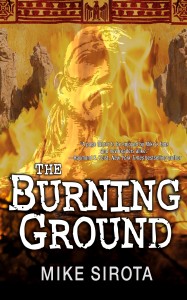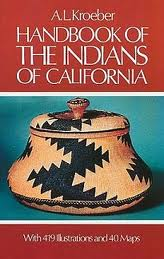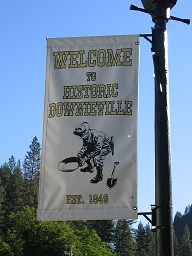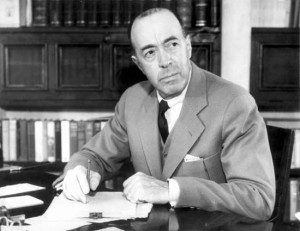I ran this interview in 2014, shortly after I reissued my ghost story, The Burning Ground.
 My Native American-themed ghost story, The Burning Ground, was first published a couple of years ago, weeks after I started this blog. I gave an interview about the story back then, and now that I’m re-releasing the book under my Atoris Press imprint—and since so many more of you now follow “Swords, Specters, & Stuff”—I thought that revisiting the interview was in order.
My Native American-themed ghost story, The Burning Ground, was first published a couple of years ago, weeks after I started this blog. I gave an interview about the story back then, and now that I’m re-releasing the book under my Atoris Press imprint—and since so many more of you now follow “Swords, Specters, & Stuff”—I thought that revisiting the interview was in order.
Q: How did you get the idea for The Burning Ground?
A: One of the most used and abused books in my collection is A.L. Kroeber’s Handbook of the Indians of California. (“Handbook” is a misnomer; you can barely hold this thick tome in one hand.) I used it to research the Washo tribe in my novel, Demon Shadows, and the Modoc tribe in The Modoc Well. When I read about the burial customs of the Maidu people—they actually called their cemetery a burning ground and set fire to brush spread across the graves to help the dead pass on to the next world—and then learned that most of the Maidu had been slaughtered during the Gold Rush, the old “what if” kicked in. What if, because of the violent way in which they died, the spirits of those from one particular small village remained trapped in their burning ground? Then, in more contemporary research, I read about the (still ongoing) desecration of Indian burial grounds by people digging for artifacts. What if the graves of the Maidu from this village were desecrated, releasing the spirits—who are really pissed off by this time? And so the plot evolved.
 Q: What research was involved in fashioning the life and culture of the Maidu?
Q: What research was involved in fashioning the life and culture of the Maidu?
A: Just about any and every book about California Indians that I could get my hands on (not too many), though again, Kroeber was the primary resource. A cultural anthropologist, Kroeber spent seventeen years among California’s indigenous population in the early twentieth century. The scope of his research is remarkable. (His daughter, Ursula Kroeber, is better known to readers of science fiction as Ursula LeGuin.) Three lengthy chapters are devoted to just the small Maidu tribe. TMI for most people, but I loved doing the research.
Q: How do you feel your work as an editor helped or hindered your writing?
A: My second and third drafts (I always do three) usually require minimal work from an editing standpoint. As a perfectionist, I probably go overboard in being anal. As an editor, I don’t want any typos or other errors. As a writer I want every detail to be correct. This doesn’t always work out 100 percent of the time, but I do my best.
Q: What writing habits do you keep?
A: I take a long walk in the morning and then start writing about mid-morning. Late in the afternoon—four, maybe five o’clock—the “creativity” button in the brain shuts off, and I stop. The usual output is 1,500 to 2,000 words. That’s the day-to-day routine.

The “semi-ghost” town of Downieville became the model for the fictional town of Lodestar.
The bigger picture: I prepare an outline and do extensive preliminary research before I write word one. Then I write the first draft, beginning to end, not stopping at all for research. The second draft consists of grunt work—trimming the fat, filling in the many blanks I leave while focusing on getting the story down, that sort of thing. The third and final draft is my favorite, for it almost always follows a trip to the locale of the story. For The Burning Ground I traveled to the active ghost town of Downieville, population 325, in the Sierra Nevada foothills. This “living research” breathes life into my stories. (See my post, “Downieville: A Ghost Town With Live People.”)
Q: Have you ever considered writing a sequel to any of your horror novels?
A: I suppose a sequel can be made to anything. Cripes, in Star Trek III they brought Spock back to life after Trekkies revolted! But mine have so far been stand-alone stories. I mean, how many people get the calling to help spirits move on to the next world (Fire Dance and The Burning Ground), or drive demons back into the hell that spawned them (Demon Shadows and The Modoc Well) more than once?
Q: In what way do you feel this book stands apart from the rest of your catalog of work?
A: When I dug farther back into the decimation of California’s indigenous population I became appalled at the extent of this genocide, beginning with the arrival of the Spanish missionaries and encompassing the decade or more after the Gold Rush. While my other two Native American-themed novels, Demon Shadows and The Modoc Well, have a comment or two about the treatment of Indians, none come close to The Burning Ground. (See my post, “California Genocide.”)
Q: Are there any writers or books that were influential in this particular novel…or in your career in general?

Edgar Rice Burroughs
A: Not this particular story. But for my career? That answer is always the same: Edgar Rice Burroughs. Tarzan, John Carter of Mars, Pellucidar—all of his numerous books were among my favorites. Without ERB I would have never become a writer.
Q: Looking back at the books you’ve written over the years, how has your work developed with time and experience?
A: I re-read many of my early works a few years ago in preparation for making them available again under my own imprint, Atoris Press. Most of them made me want to hurl. Each one requires extensive revisions before I let anyone see them. As a teacher, editor, and writing coach these past couple of decades I also learned a great deal. With every book—with every page—that you write, you should be improving your craft.
